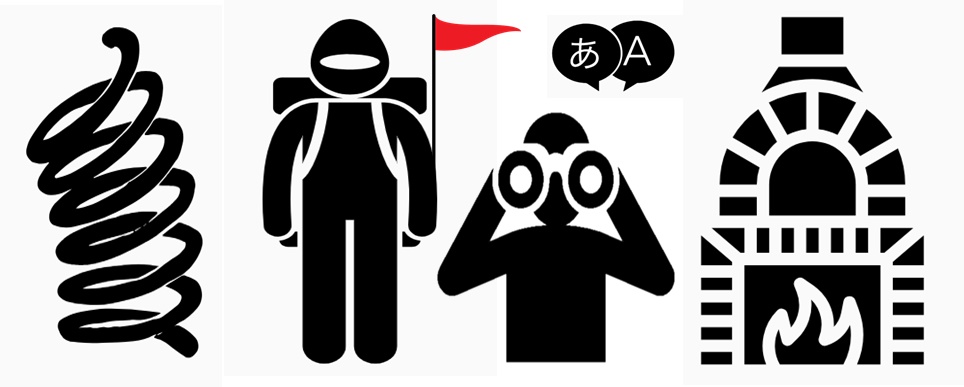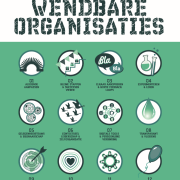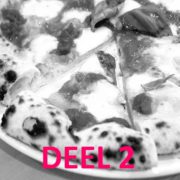The 4 roles for HR in the Agile Transition
Under pressure of the current paradigm shift we are reinventing and redesigning the way we organize work. Although many business (transition) leaders tell me that their HR team is not involved (yet) or that they don’t see HR playing a leading role in this (I strongly disagree!), it is good to see that there are HR pioneers out there thinking about the organization (structure) of the future, redesigning current HR tools to better fit the changing needs of their customers, experimenting with agile ways of working in HR practices and reinventing HR’s own role! But before we deep dive into HR roles in the agile organization (next blog), let’s see what HR can do in the transition to get there and feed the fire!
The organization of the future is agile
So if traditional, hierarchical organizations do not fit anymore, what does? We see a clear shift towards organizations that are flat (as in distributed), connected and transparent. I use the metaphor of pizzas for this as described in the framework of ‘The 12 Ingredients of Agile Organizations’.
The 12 ingredients are grouped around four agility themes: agile ways of working, flexible organizing , people & value driven leadership and shared purpose & relevance. The sum of this reflects the agile culture and mindset. Depending on context, company phase, cultureand courage each organization needs to look for its own ‘best recipe’ (how much from each ingredient and in what order can we put them together).
One thing is for sure: in the transition from traditional to agile you need to work on all 12 ingredients and all four agility themes!
Three (or maybe four?) HR roles in the Agile Transition
So what is there to do for HR in this context? I see three important roles for HR in supporting – or better leading – the transition from hierarchical to agile organizations: the HR Agilist, the Transition Leader and the Trend Translator.
* The HR Agilist >
This is the more pragmatic role where HR is using agile ways of working like Scrum, Kanban and Design Thinking (or any unique, own version) in HR’s own practices, where suitable.
It is about HR:
- understanding end-user needs & challenges and using these insights to co-create solutions in multidisciplinary teams (with only expert roles in it that actually add value to solving the problem)
- dividing the activities into small steps (each step adding value in itself) using short feedback loops, so adjustments and improvements can be made in each iteration
- the team working visually; to improve transparency within the team, but also to keep stakeholders involved and promote ‘pollination’ between teams!
- encouraging team members to speak up and engage in continuous dialogues, facilitated through events like daily stand ups and retrospectives
- Blocking time (time boxing) – even if it is an afternoon per week- for mini ‘sprints’, during which the team comes together and dedicate their time to actually get work done!
Whether it is about getting employer branding-activities up and running, rethinking the performance management cycle, looking into alternative ways of rewarding, designing a new training program or implementing a new feedback tool, the HR Agilist is not afraid to experiment and constantly reflects on “What is it the employee needs? How can we help team leads in supporting the team? What can we do to make HR services more agile? What (unnecessary) procedures can we get rid of or make things simpler and leaner in current people processes?”
* The Transition Leader >
An additional benefit of working with agile in HR practices is that it prevents HR to design ‘smart’ solutions in isolation. It makes HR go out there and automatically include the perspective of the internal customer and other stakeholders (‘flipping’ the perspective from organization/HR to people-centric or even network-centric). It also helps HR to better understand the Transition Leader role. In this role HR supports (or leads!), the organization in the transition from traditional to agile. From A (old paradigm) to B (new paradigm), via B! Too often do I see Transition Leaders who try to build new organizations with the exact same building blocks that were used when setting up traditional organizations. Sure, there are basics you can bring along to the new reality, but in many instances it means you have to let go of a lot of things (pegs and squares, static functions, hierarchical communication, one-size-fits-all HR solutions for instance) and need to redesign or build things from scratch! The HR professional in this role is able to let go of ‘old’ habits, mindsets and ‘this is the way we use to do things around here’ and has a rough idea how B looks like or knows how to co-design and co-create ‘people practices’ that fit B! The Transition Leader understands the inter-dependencies of the ingredients and sees that putting things in motion in one of the ingredients, results in reactions, hick ups and bottlenecks in one of the other ingredients.
Again, ‘The 12 ingredients’ can help out in these situations. Just have a look at this example about an organization starting with self-organizing teams:
“Changing the organization structure and team set up into self-organizing teams causes lumps elsewhere. Trying to kneed these lumps out of the pizza dough one by one and understand where the next lump might pop up is exactly how the Transition Leader can help to move the transition forward!”
In practice HR is often involved quite late in this transition process: when the works council is needed to give their consent in a reorganization or when HR tools need to be redesigned for example. I find that a pity as with our knowledge of and vision on organizational architecture, change management and people – and team coaching, we definitely have some value to add in the early stages of the transition. So take a step forward!
* The (Visionary) Trend Translator >
The Trend Translator can help the Transition Leader in painting possible pictures of the organization of the future as he/she is constantly monitoring trends and developments and translates these to the context of the organization. Obviously this is about trends that are directly related to HR, Culture & Leadership and Future of Work like scarcity on the labor market, 21st century skills, impact from Artificial Intelligence, a growing focus on happiness at work and so on, but I always encourage people to take a broader look and also include topics like:
- society
- science & technology
- demographics
- politics & economics
How do these developments impact the organization, HR and the individual employee?
This role also helps HR to be more ‘on top of the game’ (instead of being reactive): a step ahead and ready to move! It also ensures that HR’s perspective is not (only) inward focused, but it forces HR to look outward as well. Since organizational boundaries are becoming less defined and the internal and external work forces are getting more and more blended (in talent communities, knowledge-sharing networks, alumni groups and so on), we need to understand what drives people in this ‘external’ work force and how we can involve them in, have them contribute to and make them feel part of … the shared purpose and culture of the organization.
Although I believe Trend Translation should not be limited to one function or one team, but everyone should be curious & alert and translate the impact from what is going on in the world to their own context, the Trend Translator can help by sharing information about relevant developments and innovations and ignite & inspire others in the organization.
Is there a fourth role?
These three roles are interrelated: the HR Agilist can show the Transition Leader how to use agile ways of working in the transition process and share with the Trend Translator newly developed, state of the art, people practices. The Transition Leader in its turn can feed the HR Agilist with information about needs & challenges in the agile teams and share with the Trend Translator developments on the current state of agility in the organization with the Trend Translator. The Trend Translator, finally, can share information with the HR Agilist on current trends in agile ways of working and can help the Transition Leader to get a clearer picture of the organization of the future!
But I also see another important role for HR in the transition. Namely the role as ‘fire feeder’. HR can be the unexpected (or maybe obvious one) to help scaling agile and bring it to an enterprise level. Connecting hubs of agile and innovation inside (and outside) the organization. The one that ensures that the temperature in the oven (the culture, the timing, the context) is hot enough … feeding and spreading the fire! Let’s get moving!


















Plaats een Reactie
Meepraten?Draag gerust bij!